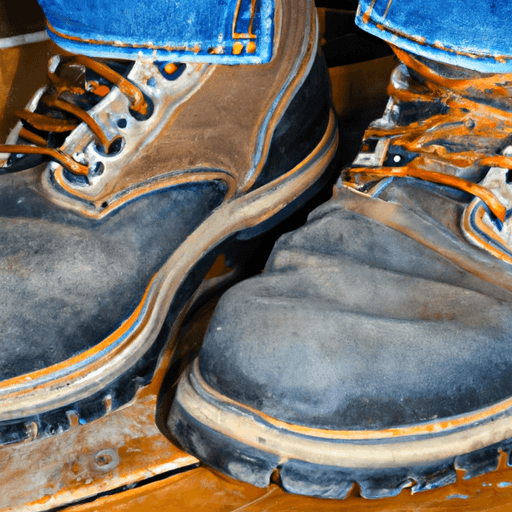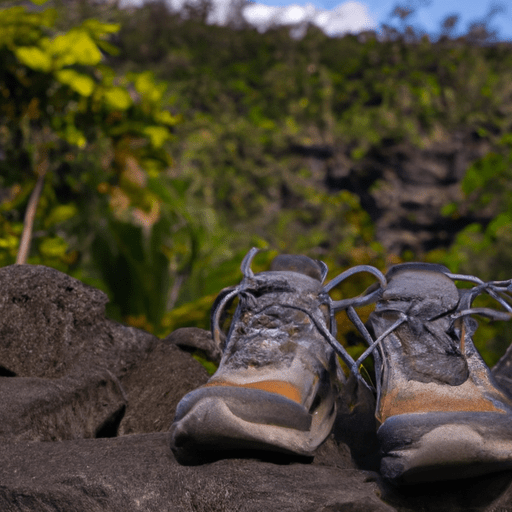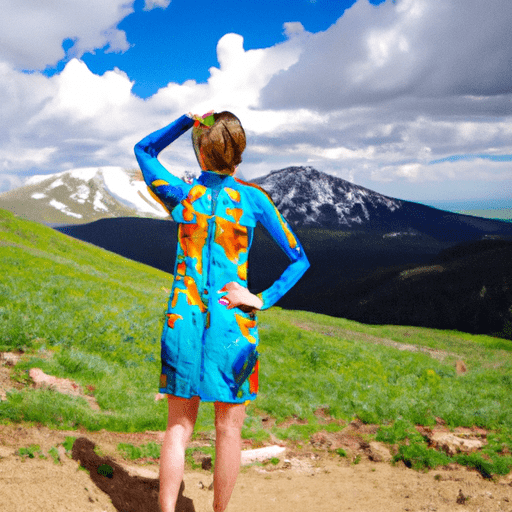Are you ready to hit the trails but don’t have a pair of hiking shoes? No worries! This article will give you some fantastic hiking outfit ideas that don’t require hiking shoes. From sturdy sneakers to comfortable sandals, we’ve got you covered. Don’t let not having the proper footwear hold you back from enjoying the great outdoors. Get ready to explore with style and comfort in mind!

Understanding the Essentials of Hiking Outfits
When it comes to hiking, having the right outfit is crucial. A good hiking outfit not only ensures your comfort and safety on the trails, but it also enhances your overall experience. But what exactly defines a good hiking outfit? Let’s delve into the essentials and understand what makes a hiking outfit effective.
Defining a good hiking outfit
A good hiking outfit consists of clothing and footwear that offer comfort, protection, and functionality. It should be designed to withstand the rigors of the trail while providing ease of movement. While hiking shoes or boots are typically preferred for their durability and grip, there are viable alternatives worth exploring if you don’t have hiking shoes readily available.
Importance of prioritizing comfort and safety
When it comes to hiking, comfort and safety should be your top priorities. The right hiking outfit ensures that you can move freely and comfortably, preventing any unnecessary fatigue or injuries. It also protects you from various elements such as rough terrains, extreme weather conditions, and potential hazards on the trails. By choosing the appropriate gear, you can have a worry-free and enjoyable hiking experience.
Hiking Without Hiking Shoes
Not having hiking shoes should not deter you from hitting the trails. There are several viable alternatives that can provide adequate support and comfort. Let’s explore some of the options available and debunk common misconceptions about hiking in non-traditional footwear.
Viable alternatives to hiking boots
If you don’t have hiking boots, fret not! Sneakers or running shoes, if they offer sufficient traction and support, can be a great alternative for hiking. Additionally, trail shoes and walking shoes are specifically designed for outdoor activities and can provide the necessary comfort and grip. Don’t limit yourself to just hiking boots; explore other options before you hit the trails.
Common misconceptions about hiking in other shoes
Many people believe that you absolutely need hiking boots to hike, but that’s not always the case. While hiking boots offer certain advantages, such as ankle support and extra durability, they are not the only suitable option. Running shoes, trail shoes, and walking shoes can also perform well on various terrains. It’s important to debunk these misconceptions and realize that you have alternatives that can get the job done.
Hiking in Running Shoes
Believe it or not, running shoes can be an excellent choice for hiking. They offer a lightweight and flexible design, allowing for better agility and ease of movement on the trails. Additionally, running shoes are often equipped with advanced cushioning technology, providing excellent shock absorption to minimize the impact on your joints.
Benefits of hiking in running shoes
Hiking in running shoes has several benefits. Firstly, their lightweight nature enables you to conserve energy, allowing you to hike for longer distances without feeling excessively fatigued. Secondly, the cushioning in running shoes helps absorb shock, reducing the strain on your feet and joints. Lastly, the flexibility of running shoes promotes a more natural and comfortable stride during your hike.
Best running shoes for hiking
When choosing running shoes for hiking, it’s essential to consider factors such as durability, traction, and support. Look for shoes with a lugged outsole that provides excellent grip on various terrains. Additionally, opt for models that offer sufficient arch support and cushioning to ensure maximum comfort during extended hikes. Some popular options include the Salomon Speedcross, Merrell Moab, and Nike Wildhorse.
Precautions when hiking in running shoes
While running shoes can be a great alternative for hiking, there are a few precautions to keep in mind. Running shoes are generally not as durable as hiking boots, so they may not withstand the same level of rough use. Be cautious while traversing rocky terrains or uneven surfaces, as running shoes may not provide the same level of protection. Additionally, ensure your running shoes are properly broken in before embarking on a long hike to avoid discomfort or blisters.
Hiking in Trail Shoes
If you’re looking for a middle ground between hiking boots and running shoes, trail shoes are an excellent option. These shoes are specifically designed for outdoor activities such as hiking, offering a balance between comfort and traction.
Understanding the use of trail shoes
Trail shoes are built with robust materials and feature a sturdy construction, making them suitable for various terrains. They often have a toe cap and reinforced heel, providing extra protection against rocks and obstacles. Additionally, trail shoes have a grippy outsole that offers reliable traction, making them ideal for both uphill and downhill hikes.
Forming a balance between comfort and traction in trail shoes
One of the key advantages of trail shoes is their ability to strike a balance between comfort and traction. They offer sufficient cushioning and support, ensuring a comfortable hiking experience. At the same time, their sturdy outsole and aggressive lug pattern provide excellent traction on different surfaces. This combination of comfort and traction makes trail shoes versatile and suitable for a wide range of hikers.

Hiking in Walking Shoes
While walking shoes may not be the first choice for most hikers, they can be a viable option depending on the terrain and personal preference. Let’s explore the advantages and disadvantages of utilizing walking shoes for your hiking adventures.
Advantages and disadvantages of walking shoes
Walking shoes offer several advantages for hiking. They are often lightweight, flexible, and comfortable, making them ideal for less demanding trails or shorter hikes. Additionally, walking shoes are generally more affordable than hiking boots or specific trail shoes, saving you money without compromising your experience.
However, walking shoes may not provide the same level of ankle support as hiking boots or trail shoes, potentially increasing the risk of sprains or injuries on challenging terrains. They also lack the ruggedness and durability needed for extensive or strenuous hikes. It’s important to assess the difficulty level of your planned hikes and determine if walking shoes are suitable for your needs.
Choosing the right pair of walking shoes for hiking
If you decide to hike in walking shoes, consider the specific features that will optimize your experience. Look for walking shoes with a durable and breathable upper, such as mesh or synthetic materials. Ensure that they provide ample cushioning and support to minimize foot fatigue during extended hikes. Additionally, opt for models that have a reliable outsole with decent traction to keep you stable on different surfaces.
Foot Protection Without Hiking Boots
When you don’t have hiking boots, it’s vital to pay extra attention to foot protection. There are various measures you can take to ensure your feet remain comfortable and free from blisters and chafing.
Importance of high-quality socks
Investing in high-quality socks can make a world of difference when hiking without boots. Look for socks that are moisture-wicking and have cushioning in key areas, such as the heel and ball of the foot. Merino wool socks are highly recommended for their ability to regulate temperature and prevent odors. A good pair of socks will reduce friction, minimize the risk of blisters, and keep your feet dry and comfortable throughout your hike.
Considering insoles and footbeds
To enhance the comfort and support of your non-hiking shoes, consider utilizing insoles or footbeds. These inserts can provide additional cushioning and arch support, reducing the strain on your feet and enhancing overall comfort. There are various brands and types of insoles available, allowing you to customize your hiking shoes to your specific needs.
Dealing with blisters and chafing
When hiking without hiking boots, it’s important to be proactive in preventing blisters and chafing. Start by ensuring your shoes fit properly and are properly broken in before embarking on a long hike. Consider applying moleskin or blister prevention patches to areas prone to friction. Additionally, keep your feet dry and free from moisture by changing into dry socks if needed. If blisters do occur, treat them promptly by cleaning the area and applying blister pads or bandages to prevent further irritation.

Clothing Choices for Hiking Without Hiking Shoes
While footwear is essential, don’t overlook the importance of clothing choices when hiking without hiking shoes. Consider the following factors when selecting your hiking attire.
Selecting durable and breathable materials
Opt for clothing made from durable and breathable materials, such as synthetic fabrics or merino wool. These materials wick away moisture, keeping you dry and comfortable during your hike. Durability is especially important when hiking without boots, as your shoes may not provide as much protection against rugged terrains.
Layering clothing for various weather conditions
Layering is key when it comes to hiking in different weather conditions. Rather than relying on a single heavy jacket, opt for multiple lightweight layers that you can easily add or remove as needed. This allows you to regulate your body temperature and stay comfortable, whether it’s a chilly morning or a hot afternoon. A base layer, mid-layer, and outer layer are all important components of a versatile hiking outfit.
Packing extra clothing and protective gear
When hiking without hiking boots, it’s a good idea to pack extra clothing and protective gear to prepare for any unforeseen circumstances. Bring along a waterproof jacket or poncho in case of rain, as well as a hat and sunglasses for protection against the sun’s rays. Additionally, consider bringing a compact first aid kit and a small emergency blanket for added safety.
Hiking Outfits for Different Terrains
The choice of hiking outfit may vary depending on the terrain you will be exploring. Let’s take a look at some specific recommendations based on different environments.
Hiking in forests and woods
When hiking in forests and woods, it’s important to prioritize protection against elements such as low-hanging branches, thorny bushes, and uneven terrain. Opt for long pants made from durable and lightweight materials, such as nylon or polyester. Choose a breathable shirt with long sleeves to protect your arms from scratches and insect bites. Additionally, consider wearing a brimmed hat to shield your face from branches and debris.
Hiking in mountains
Mountain hikes often involve unpredictable weather conditions and challenging terrains. Dressing in layers is crucial for these expeditions. Start with a moisture-wicking base layer to keep you dry, add an insulating mid-layer for warmth, and finish with a waterproof and windproof outer layer. Don’t forget to wear sturdy and supportive shoes or boots that offer excellent traction on steep slopes.
Hiking in humid and dry conditions
In humid and dry conditions, it’s important to prioritize breathability and sun protection. Opt for lightweight and moisture-wicking clothing to prevent overheating. Choose light-colored garments to reflect sunlight and help keep you cool. Don’t forget to protect your skin by applying sunscreen and wearing a hat with a wide brim. Hydration is also crucial, so carry enough water and consider electrolyte supplements for longer hikes.
Handling Weather Conditions Without Hiking Shoes
Weather conditions can significantly impact your hiking experience. Let’s take a closer look at how to handle different weather scenarios when you don’t have hiking shoes.
Hiking in rainy weather
When hiking in rainy weather without boots, it’s important to take extra precautions to keep your feet dry. Consider wearing waterproof or water-resistant shoes to minimize moisture penetration. Pair them with gaiters to provide an added layer of protection against rain, mud, and debris. Pack extra pairs of socks to change into if your current pair gets wet, and utilize waterproof bags or dry sacks to protect your belongings.
Hiking in cold conditions
When hiking in cold conditions without boots, it’s crucial to prioritize insulation and warmth. Layer up with thermal base layers, insulating mid-layers, and a windproof and waterproof outer layer. Opt for thicker socks made from wool or thermal materials to keep your feet warm. Consider using insulated insoles or foot warmers for added comfort. It’s also important to keep moving and stay hydrated to maintain your body temperature.
Hiking in hot and sunny weather
Hiking in hot and sunny weather without boots requires careful consideration of sun protection and temperature regulation. Wear lightweight and breathable clothing that covers your skin without causing overheating. Choose a wide-brimmed hat and sunglasses to shield your face and eyes from the sun. Apply sunscreen generously and regularly, and don’t forget to stay hydrated by drinking plenty of water.
Maintenance and Care for Non-Hiking Shoes
Proper maintenance and care of your non-hiking shoes are vital for their longevity, especially when they are subjected to the rigors of hiking. Follow these tips to keep your shoes in good condition even without the additional durability of hiking boots.
Cleaning and caring for your shoes post-hiking
After each hike, clean your shoes thoroughly to remove any dirt, mud, or debris that may have accumulated. Use a brush or cloth to wipe away surface dirt, and if necessary, rinse them with water. Let the shoes air dry, avoiding direct sunlight or heat sources that may damage them. Regularly inspect your shoes for any signs of wear and tear, and address any damage promptly to prevent further deterioration.
Maximizing the lifespan of your non-hiking shoes
To maximize the lifespan of your non-hiking shoes, it’s important to rotate them with other pairs. Using the same shoes for hiking repeatedly can accelerate wear and tear. Alternate between different pairs to allow them sufficient time to decompress and recover. Additionally, storing your shoes in a cool, dry place when not in use can help prevent mold and prolong their lifespan.
In conclusion, while hiking boots are the traditional choice for outdoor adventures, there are viable alternatives that can provide comfort and safety for those without hiking shoes. Running shoes, trail shoes, walking shoes, and even sandals can all serve you well on the trails. Remember to prioritize comfort, support, and protection when choosing your footwear for hiking. Regardless of the shoes you wear, take proper care of them to ensure their durability and longevity. So lace up, grab your gear, and embark on your next hiking adventure with confidence, even without hiking shoes!






